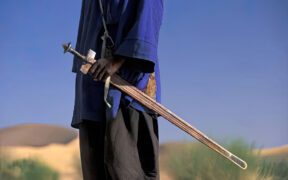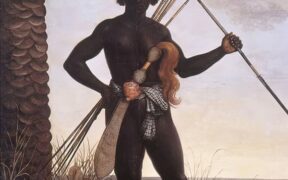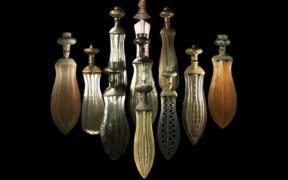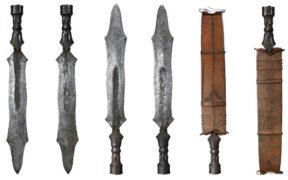Manding Sword: The African Python-Like Blade
NO AI USED This Article has been written and edited by our team with no help of the AI
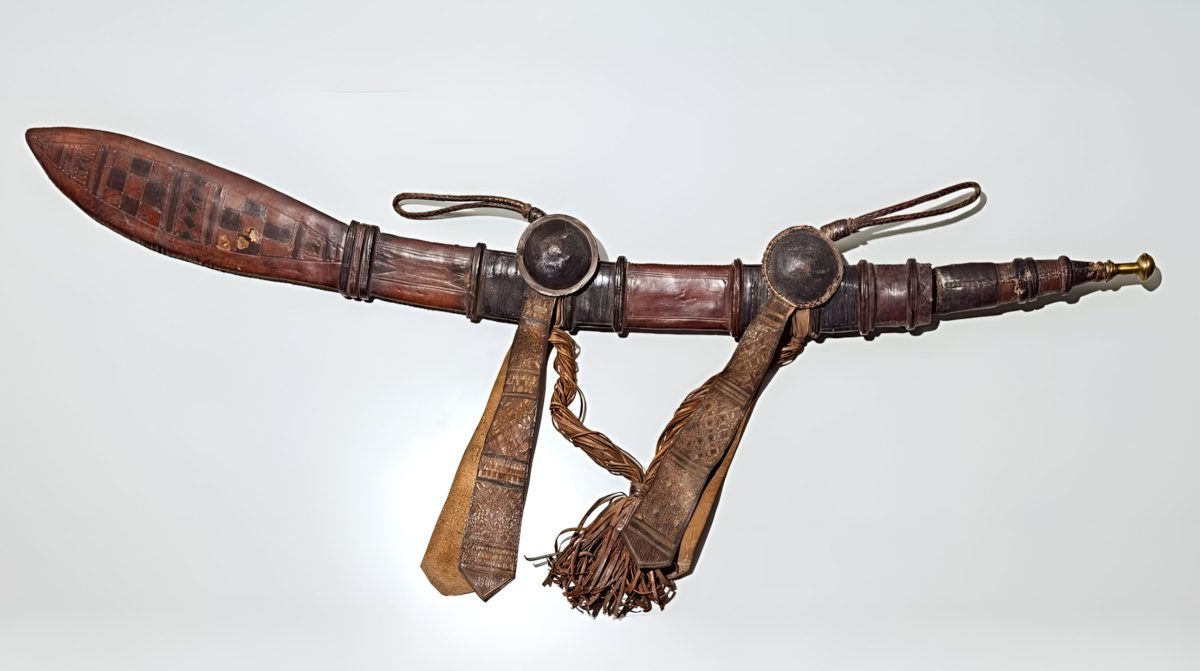
The Sahel region, which spans the continent of Africa, gave birth to many different types of African swords and blades. Due to the influence and widespan trade that occurred from the Arabic world to the east, the West African tribes to the west, and at times, to Europe, the Manding blade was discovered.
The Manding blade was used by the Manding Tribe of the Sahel region and is one of the most popular African sparring swords today. In this article, we will go over its main types, characteristics and explain how they were best used. Then we will go over its history and explain the theories about its origins.
Types of Manding Swords
The Manding sword is commonly seen in two shapes and designs – a straight and a curved blade structure. Although they can come in these two types, they share the same characteristics, especially in the guard, handle, blade fuller, and scabbard.
Straight Double-Edged Blade
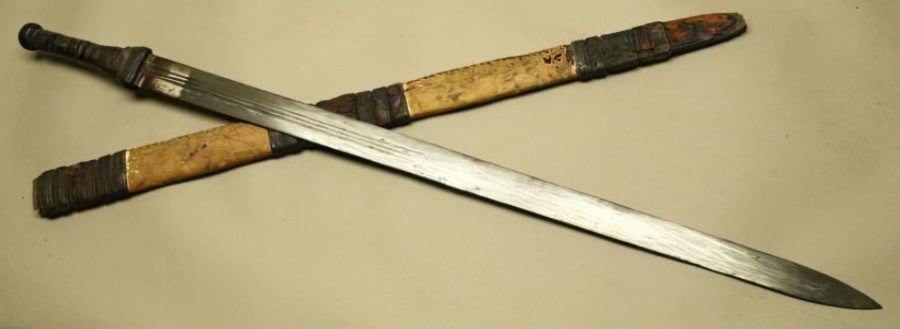
Today’s more popular Manding used for sparring and training is the straight and double-edged version. It is a sword with two sharpened edges that taper at the end of the blade ending in a pointed tip. This design and type of Manding is possibly an earlier and more indigenous version influenced by the African Omani Kattara.
Curved Single-Edged Blade

The Manding’s second design and type is single-edged, sharpened on one side of the blade, and often featuring a curve. More surviving examples of historical Manding swords today are of this type, mainly because they were constructed much later than the previous types, commonly featuring European blades.
Characteristics of the Manding Sword
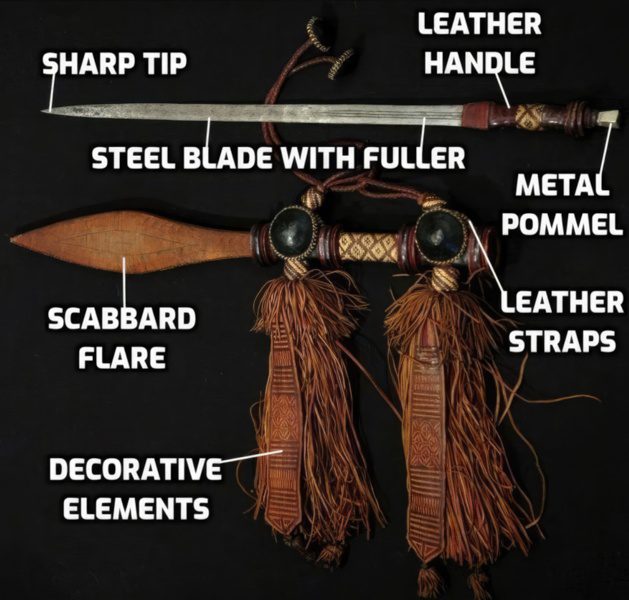
Manding swords can be confused with different types of African swords, particularly European swords, by the appearance of the blade. There are a couple of reasons for this which will be discussed below, but its most prominent characteristic is the guard and scabbard, which sets it apart and makes it unique.
Blade

The Manding sword’s blade, available in straight or curved styles, is typically 25 to 33 inches (65 to 85 cm) long, suitable for one-handed use.
Its full-tang construction extends into the handle, improving balance. Blade fullers, ranging from one to three, lighten the sword and improve usability.
Some blades are flat, while others incorporate designs from European or Middle Eastern swords, such as Falchions or 19th-century sabers, adding to their versatility.
Guard
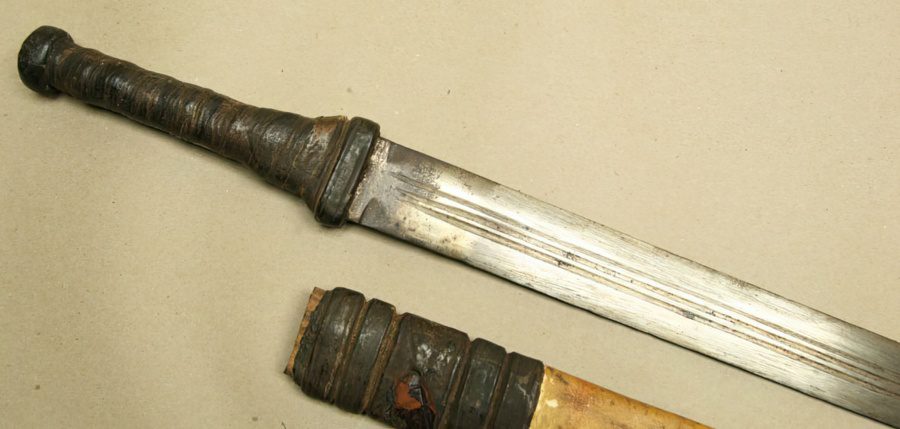
A trait that sets the Manding apart from different swords and makes it easy to recognize is the absence of a guard. It does not feature any type of metal guard to protect the user’s hand. In some 20th and late 19th-century Mandings, a small round metal piece holds the handle and blade together but does not offer any kind of protection.
Handle
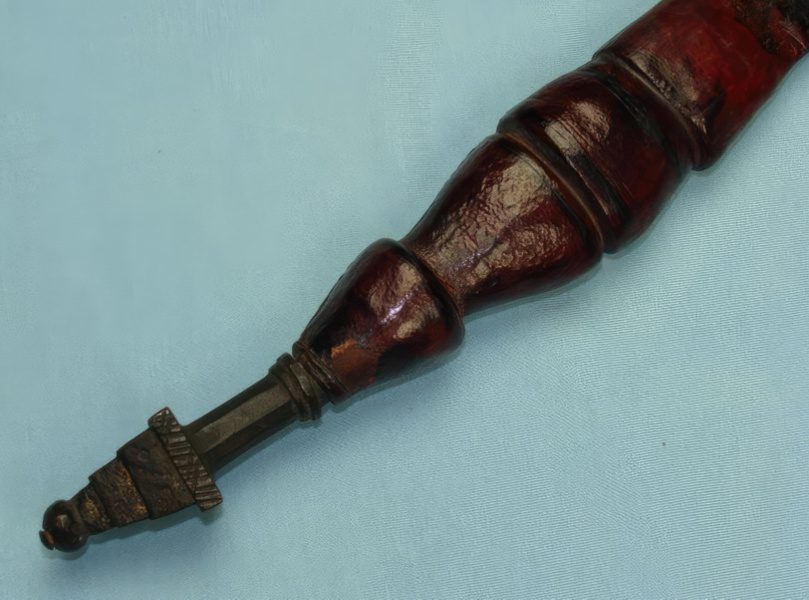
The Manding sword is distinct for its handle, which is usually cylindrical and about 6 inches (15 cm) long. Designed primarily for one-handed use, it allows for two-handed grip if needed.
The handles, often made locally, are constructed from wood, with a finish of oiled cloth or leather and ribbed for a stronger grip.
The cylindrical hilt style, lacking hand protection, is influenced by Omani swords from the Sahel’s east coast trade network.
Pommel

Manding swords have sphere or ball-shaped pommels that act as a counterweight to the sword or hold the full tang blade and handle together. Sometimes these can be highly ornamental and have several layers or a piece of metal sticking out.
These pommels can be longer on some Manding swords and can act as a hand-and-a-half sword, meaning that if someone wants to use it, they can vary between one-handed and two-handed. They are mostly there for aesthetics alone and are not used for bashing or blunt strikes.
Scabbard
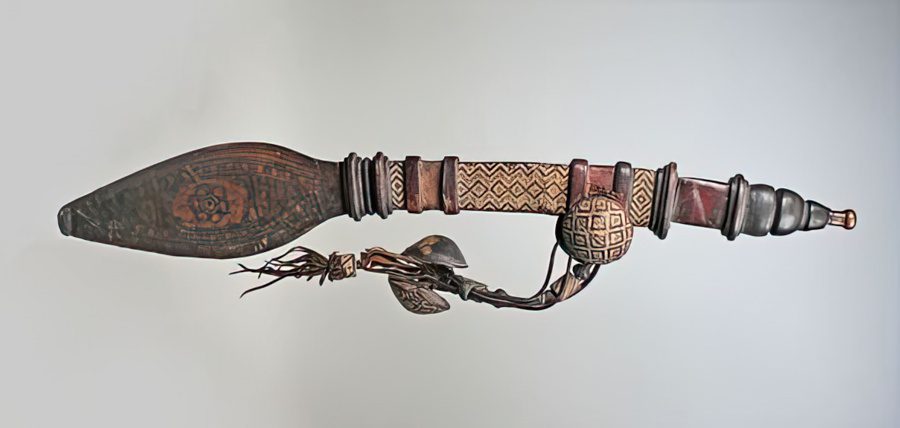
The Manding sword’s scabbard is its most fascinating feature, noted for its leather craftsmanship and detailed decorations like African symbols and precious metals.
A distinctive flare, common in some Sudanese African swords, reflects cultural influences, possibly inspired by Vodun beliefs.
This flare might be linked to the reverence of pythons and crocodiles in West African culture, adding to the scabbard’s aesthetic when the sword is sheathed.
Size and Length
These swords are used with one hand and typically carried as a side sword in its elaborate scabbard. That means the Manding isn’t a fairly long sword, usually around the 32 to 39-inch (80 to 100 cm) mark, which allows for very quick strikes and defenses.
Weight
Not all Manding were made with the intention of combat and were more ornamental and pieces that traders could wear around on their waists to represent wealth and status. Because it was often carried, it was a lightweight sword averaging around 1.9 lbs (850 grams).
How was the Manding Sword Used?
The Manding sword is a one-handed blade-edged weapon primarily used for slashing but can be very effective at delivering thrusts. The blade does not feature a guard leaving the user’s hands vulnerable to attacks. Footwork and quick jumping while using this sword were key.
Warfare & Combat
Like many other African swords, the main use of the Manding could have been warfare. The people of the Manding region were renowned and hospitable traders that welcomed African and Arabic Lords and guests from the east and north into their trade network. This sword would have been used as a means of protection and intimidation or to signify their higher status and rank. In some cases, raiders used the protective Manding blade for offensive actions instead and plundered their way inside the trade network.
Ceremonial and Prestigious
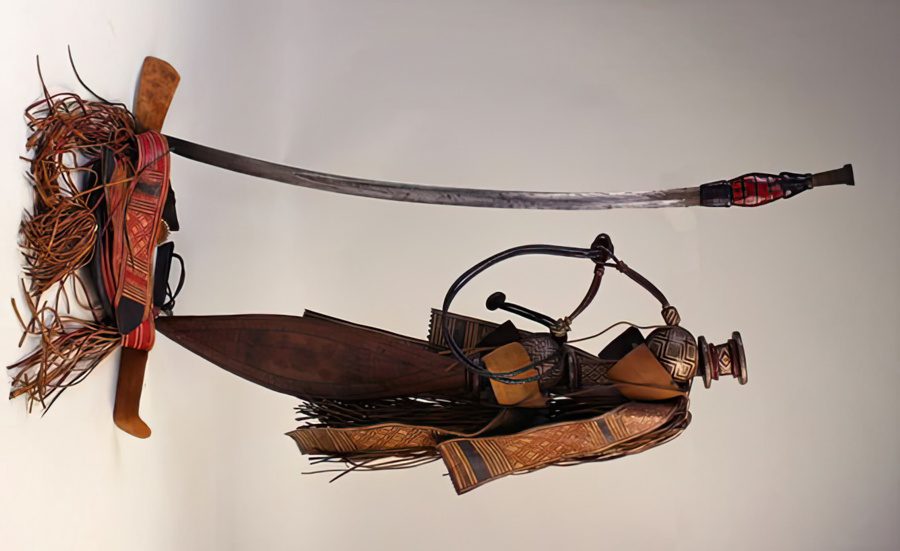
Influence by the rich traders and their ornamental sword pieces beside them could have led to the creation of the Manding as a type of dress sword. The scabbard flare pointing up, combined with European steel, could raise the prestige of a trader, warrior, or African nobility.
Trade
The Manding swords were used as highly valued trade goods, especially when bringing in steel from Europe after the colonial influence. The Sahel region of Africa is known for trading swords and metal, extending from Oman to West Africa. Traders saw frequent profit from swords like the beautifully designed Manding and its scabbard.
History of the Manding Sword

The exact origins of the Manding sword are somewhat disputed. Some trace the sword and its characteristics to Eastern Africa and the influence of the Arabic merchants. This theory is that the Omani Kattara and the Kaskara sword, which has a flare scabbard tip, directly influenced and led to the creation of the Manding through Sudan and the Sahel region to the west.
This could be possible because, with the Islamic influence and conversion of the Mondengo regions, there was much coming and going both in trade and travel, especially to Mecca for the Hajj Pilgrimage. With this theory, the Manding might be a sword from around the 15th or 16th century.
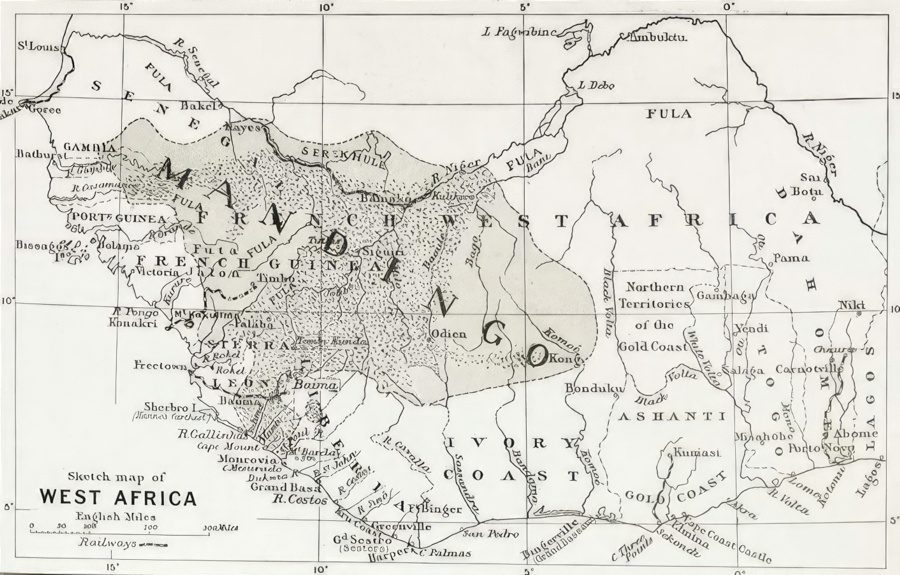
The more accepted theory is that the Manding is a sword from the early 19th century because it mostly features European blades of this time frame. The handle and scabbard are made locally, while the blades are brought in from Europe, predominantly French cavalry sabers and Solingen-crafted blades.
